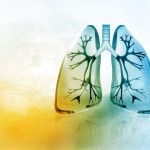Balneo and Light Therapy Effective for Psoriasis and Atopic Eczema
Node Smith, ND
It’s always great to hear about the research on balneotherapy and other hydrotherapeutic treatments. Especially when those treatments are for conditions that are often difficult to treat using conventional means. Much of the research and use of hydrotherapy comes out of Europe, and the following press release is from The German Institute for Quality and Efficiency in Health Care (IQWiG). The press release concerns considering both balneotherapy and UV light therapy as effective treatments for psoriasis and atopic eczema.
From the IQWiG
Atopic eczema, also called neurodermatitis, is a chronic skin condition usually associated with severe itching, which can cause massive impairment of the quality of life. The German Institute for Quality and Efficiency in Health Care (IQWiG) had already investigated in 2007 whether a combination of bath therapy and UV light therapy (balneo-phototherapy) has better treatment results than UV light therapy alone. In 2007, convincing results were only available for a different skin condition, namely psoriasis. Having included newer study data, IQWiG now sees an indication of an advantage of synchronous balneo-phototherapy, in which a Dead Sea salt bath is used simultaneously with UV light, also for atopic eczema.
G-BA commissioned new assessment
After IQWiG’s 2007 assessment determined greater benefit of balneo-phototerapy in psoriasis, the Federal Joint Committee (G-BA) decided in 2008 to have the treatment in this therapeutic indication reimbursed by statutory health insurance funds in the outpatient sector. Uncertainty was higher in the case of atopic eczema, however, which is why balneo-phototherapy for this condition was exempt from reimbursement.
In the meantime, results from an additional randomized controlled trial (RCT), which compared synchronous balneo-phototherapy with dry UV light therapy in atopic eczema, became available. The G-BA therefore commissioned IQWiG to reassess benefit and harm.
Evaluation of two studies
In 2007, it was not possible to draw reliable conclusions on the basis of the first study, which was comparatively small with 180 patients. With 500 patients being treated in the follow-up study, however, the newer results were notably more precise.
Both studies were conducted in the federal state of Bavaria. Several health insurance funds, the Bavarian Association of Statutory Health Insurance Physicians, the Ludwig-Maximilians-Universität München, and industry partners started a joint model project to facilitate the second study. In this study, patients with atopic eczema were treated for at least one month, mostly under dermatologic monitoring. The patients received between 10 and 35 treatment sessions with a duration of about 15 minutes each.
Skin status showed clinically relevant difference
In the analysis of both studies, the results for the outcome “skin status,” which also includes symptoms such as itching or insomnia, are in favor of synchronous balneo-phototherapy. The Institute sees an indication of greater benefit here. The highest category (“proof”) was not reached with the new data either, however, as the results could be biased, particularly as many participants discontinued the studies for unknown reasons, and values were missing for a substantial number.
No conclusions possible on quality of life and side effects
Unfortunately, conclusions on other outcome criteria that are important to the patients are still not possible. Regarding quality of life, the first study had shown no differences between the treatment groups in 2006. The follow-up study did not record this outcome at all. Likewise, no conclusions can be drawn on side effects, which can occur in the form of sunburn-like skin irritation, for example: As it is unclear whether these so-called adverse events were recorded and reported completely in the second study, the data are ultimately not usable.
In the overall consideration, IQWiG sees an indication of greater benefit, which is only based on the results regarding skin status, however. The studies also provided no answer on the sustainability of the treatment effects. No follow-up observation had been planned for the second study.
More research needed in spa and bathing treatments
Balneotherapy has a long tradition in Germany, which Sebastian Kneipp contributed to with his “water cures” over 100 years ago. It is still unclear in many cases, however, whether these treatment methods have an actual benefit or whether they merely contribute to a feeling of well-being. Tradition, lack of knowledge, and lack of funding all impair clinical research in this field. “It is unfortunate that only two studies on atopic eczema are available on the combination of salt bath and UV light, although this treatment has been known for so long and is widely used,” says Stefan Sauerland, Head of the IQWiG Department of Non-Drug Interventions. “High-quality studies on research questions concerning spa and bathing treatments would be important to be able to separate the useful from the useless also in this area,” he adds.
 Node Smith, ND, is a naturopathic physician in Portland, OR and associate editor for NDNR. He has been instrumental in maintaining a firm connection to the philosophy and heritage of naturopathic medicine among the next generation of docs. He helped found the first multi-generational experiential retreat, which brings elders, alumni, and students together for a weekend camp-out where naturopathic medicine and medical philosophy are experienced in nature. Four years ago he helped found the non-profit, Association for Naturopathic ReVitalization (ANR), for which he serves as the board chairman. ANR has a mission to inspire health practitioners to embody the naturopathic principles through experiential education. Node also has a firm belief that the next era of naturopathic medicine will see a resurgence of in-patient facilities which use fasting, earthing, hydrotherapy and homeopathy to bring people back from chronic diseases of modern living; he is involved in numerous conversations and projects to bring about this vision.
Node Smith, ND, is a naturopathic physician in Portland, OR and associate editor for NDNR. He has been instrumental in maintaining a firm connection to the philosophy and heritage of naturopathic medicine among the next generation of docs. He helped found the first multi-generational experiential retreat, which brings elders, alumni, and students together for a weekend camp-out where naturopathic medicine and medical philosophy are experienced in nature. Four years ago he helped found the non-profit, Association for Naturopathic ReVitalization (ANR), for which he serves as the board chairman. ANR has a mission to inspire health practitioners to embody the naturopathic principles through experiential education. Node also has a firm belief that the next era of naturopathic medicine will see a resurgence of in-patient facilities which use fasting, earthing, hydrotherapy and homeopathy to bring people back from chronic diseases of modern living; he is involved in numerous conversations and projects to bring about this vision.









